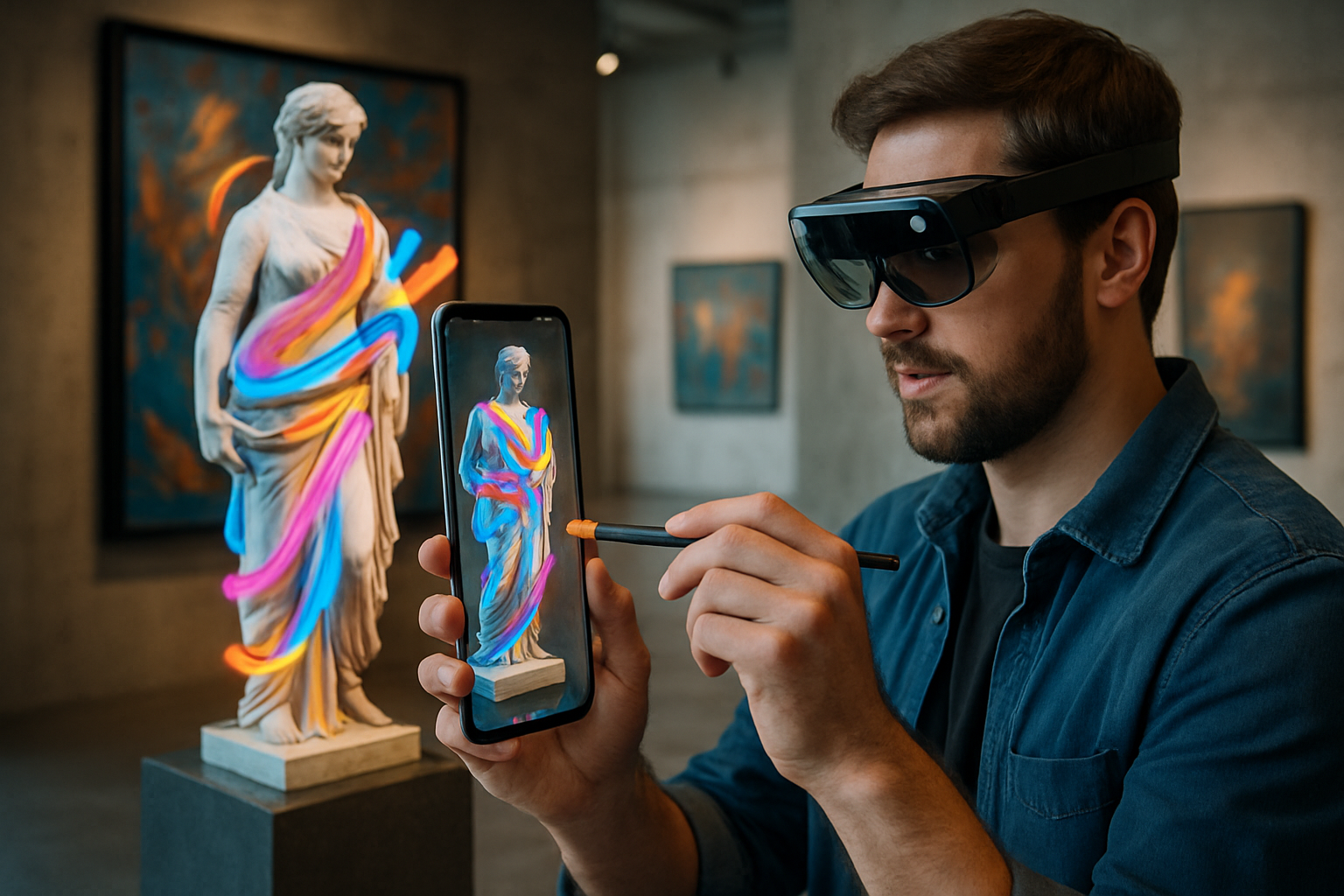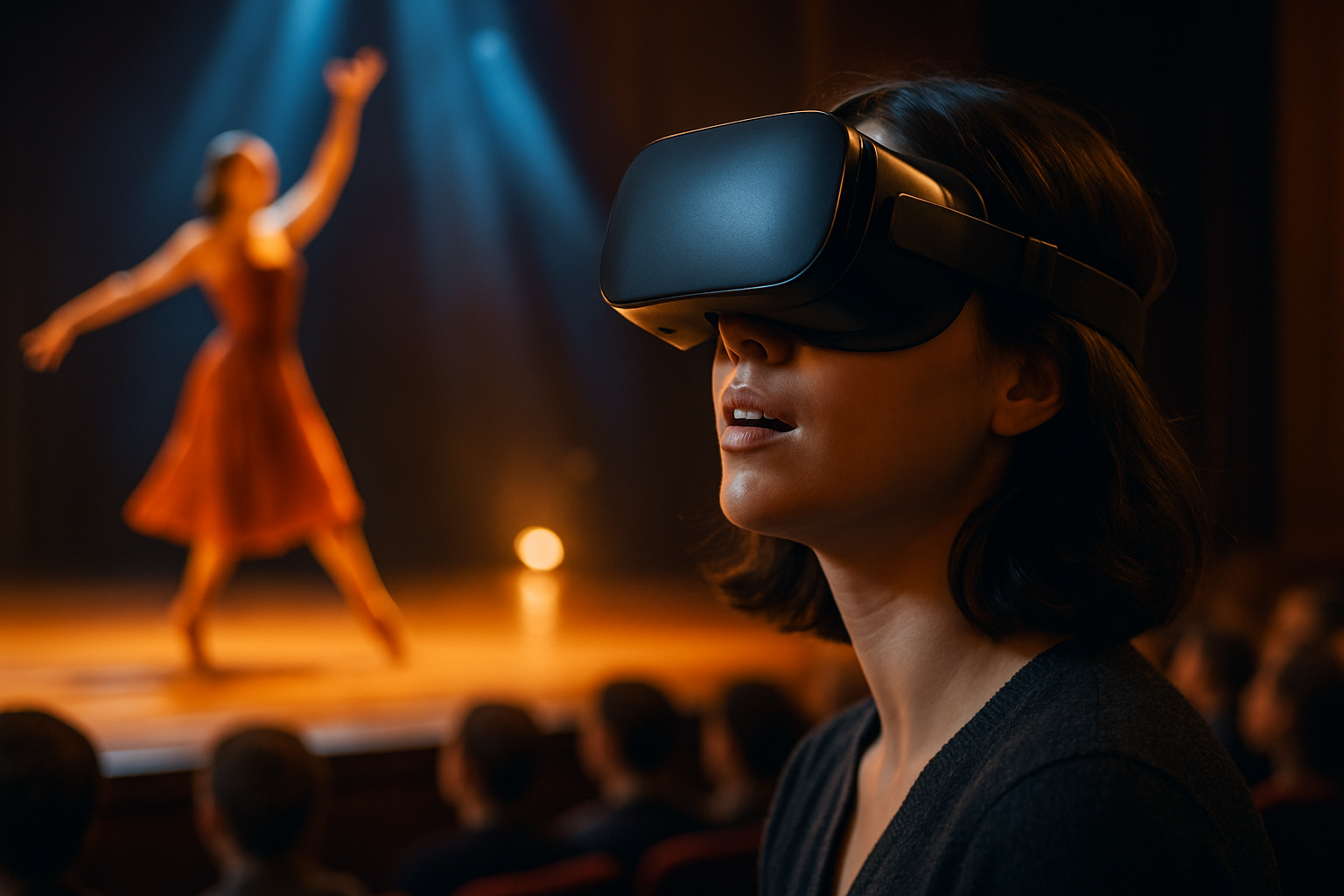Augmented Reality Art: Blending Digital and Physical Realms
In a world where technology increasingly permeates every aspect of our lives, the art world is experiencing a revolutionary transformation. Augmented Reality (AR) art is emerging as a groundbreaking medium, challenging traditional notions of creativity and perception. This innovative form of expression is reshaping how we interact with and experience art, blurring the lines between the digital and physical realms.

Redefining the Canvas
AR art transcends the limitations of physical space, allowing artists to create immersive experiences that overlay digital content onto the real world. This technology enables viewers to interact with artworks in ways previously unimaginable, transforming passive observation into active participation. From floating sculptures in public spaces to interactive murals that come to life through smartphone screens, AR art is redefining the concept of the canvas.
The Technological Palette
The tools used in AR art creation have evolved rapidly. Artists now have access to sophisticated software and hardware that can track real-world environments and seamlessly integrate digital elements. Platforms like ARKit and ARCore have democratized AR development, allowing artists with varying levels of technical expertise to bring their visions to life. This accessibility has led to an explosion of creativity in the field.
Challenges and Opportunities
While AR art offers exciting possibilities, it also presents unique challenges. Issues of accessibility, as not everyone has access to the necessary technology, and concerns about the ephemerality of digital art are at the forefront of discussions in the art world. However, these challenges also present opportunities for innovation, pushing artists and technologists to develop new solutions and explore uncharted territories in artistic expression.
The Future of AR in Museums and Galleries
Traditional art institutions are beginning to embrace AR as a means of enhancing visitor experiences and expanding their collections. Museums are experimenting with AR-enhanced exhibitions that provide additional context, interactive elements, and even virtual restorations of damaged artworks. This integration of technology is not only attracting younger audiences but also offering new ways to engage with historical and contemporary art.
AR Art in Public Spaces
One of the most exciting applications of AR art is its ability to transform public spaces. Artists are using AR to create site-specific installations that respond to and interact with their environments. These works can range from playful interventions that add whimsical elements to urban landscapes, to powerful political statements that overlay alternative realities onto contested spaces. The potential for AR to democratize art by making it accessible outside of traditional gallery settings is particularly promising.
The Intersection of AR and Performance Art
AR technology is also opening up new avenues for performance art. Artists are creating hybrid experiences that blend live performance with digital elements, allowing for unprecedented levels of audience interaction and immersion. These performances challenge our understanding of presence and embodiment, creating experiences that exist simultaneously in physical and virtual spaces.
Ethical Considerations in AR Art
As AR art continues to evolve, it raises important ethical questions. Issues of privacy, consent, and the potential for digital vandalism are becoming increasingly relevant. Artists and technologists are grappling with how to create meaningful AR experiences while respecting individual rights and public spaces. The development of ethical guidelines for AR art is an ongoing process that will shape the future of this medium.
The Commercial Potential of AR Art
The art market is beginning to recognize the value of AR art, with galleries and auction houses exploring ways to monetize and collect these digital creations. NFTs (Non-Fungible Tokens) have emerged as one potential solution, allowing for the authentication and sale of digital artworks. As the market for AR art matures, it has the potential to disrupt traditional art valuation and collection practices.
AR Art as a Tool for Social Change
Many artists are leveraging AR’s unique capabilities to create works that address social and political issues. From visualizing climate change data to creating virtual monuments that challenge historical narratives, AR art has the power to make abstract concepts tangible and immediate. This ability to overlay alternative realities onto our world makes AR a potent tool for activism and social commentary.
The Collaborative Nature of AR Art
AR art often blurs the lines between artist, technologist, and viewer. Many AR projects require collaboration between artists, programmers, and even the public. This collaborative approach is fostering new forms of creative partnerships and challenging traditional notions of authorship in art. As AR technology becomes more sophisticated, we can expect to see even more innovative collaborations that push the boundaries of what’s possible in art creation.




